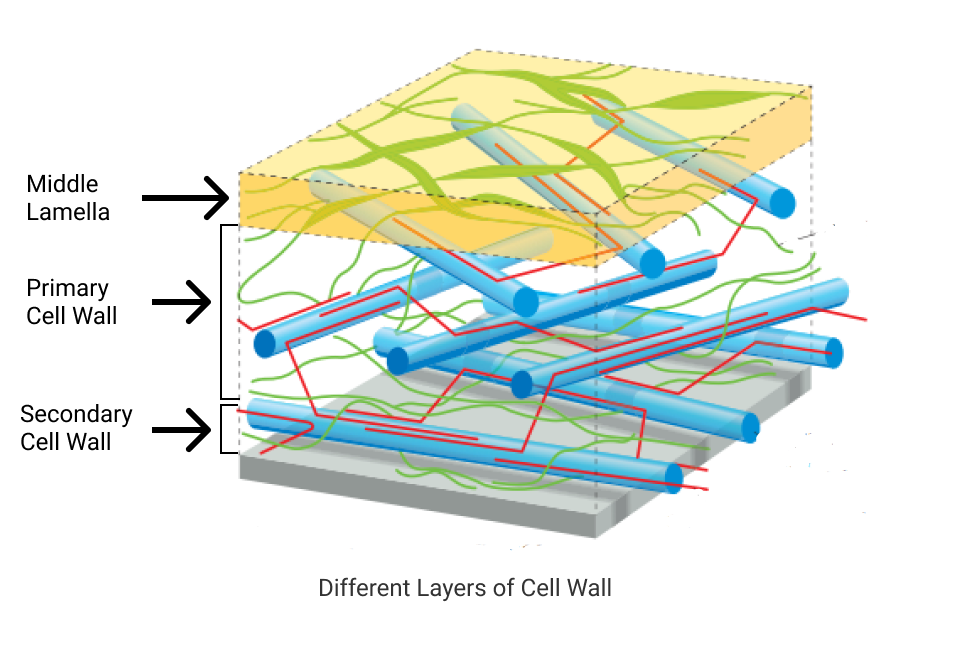A cell wall is a rigid layer that provides mechanical support to plant cells, fungi, and some prokaryotic cells like bacteria. It acts as a protective layer that protects the internal organelles of a cell.
In this article, you will learn about some of the most important functions of the cell wall.
But first, let’s quickly revise the cell wall structure in plant cells. A cell wall is composed of 5 layers:

- Middle Lamella is the first cementing layer of the cell wall that joins adjacent cells.
- Primary Cell Wall is a thin layer of cellulose, chitin, and murein.
- Plasmodesmata acts as a bridge between adjacent cells to transfer cytoplasmic materials.
- Secondary Cell Wall is a thick layer consisting of chemicals like suberin, silica, wax, resins, oils, etc.
- Pits are an unthickened area in the secondary cell that helps in the rapid translocation of materials between two adjacent cells.
What are the functions of cell walls?
As mentioned earlier, cell walls are the outermost layer that provides protection and support to a cell.
Let’s see some of the primary functions of a cell wall in plant cells:
1. Cell wall helps to maintain the cell shape
In plant cells, cell walls provide rigidity and help to maintain the fixed shape. Because of this, plants can stand tall and straight.
This is important for the survival of plants because plants cannot move like animals, so they must have a rigid structure that allows them to grow larger than their surroundings to access direct sunlight.
2. Protects the internal organelles of a cell
It acts as the protective layer that protects the inner component of cells from mechanical injuries. Also, it prevents the entry of pathogenic agents inside the cell.
3. Helps in absorption of sap needed for plant
The fibrous layer of cell walls present in the root hair of plants can travel significant distances to absorb sap (food and nutrients) from the soil.
4. Cell wall maintains the osmotic swelling pressure
Cellulose microfibrils present in cell walls prevent the osmotic bursting of the cell during osmosis (movement of solvent from higher concentration to lower concentration).
5. Provides the functionality of filtering layer for cells
Cell wall allows the passage of useful nutrients and chemicals and prevents the passage of harmful substances. Thus, it acts as a filter for cells.
6. Cell walls are involved in communications
Middle lamella helps to join adjacent cells together. Also, plasmodesmata (which extends through cell walls) can communicate with neighboring cells by transferring cytoplasmic materials.
7. Helps in transpiration
Various deposition of call walls like cutin, wax, silica, and suberin help reduce the rate of transpiration.
8. Conduction of sap
Cell walls of tracheids and vessels help conduct and store sap in plant cells.
9. Helps in the growth of plant cells
During the elongation of cells, the primary cell walls can be loosened, which helps in the growth of plant cells. And, once the cell growth is completed, the cell wall is thickened by forming a secondary cell wall.
Recommended Reading: